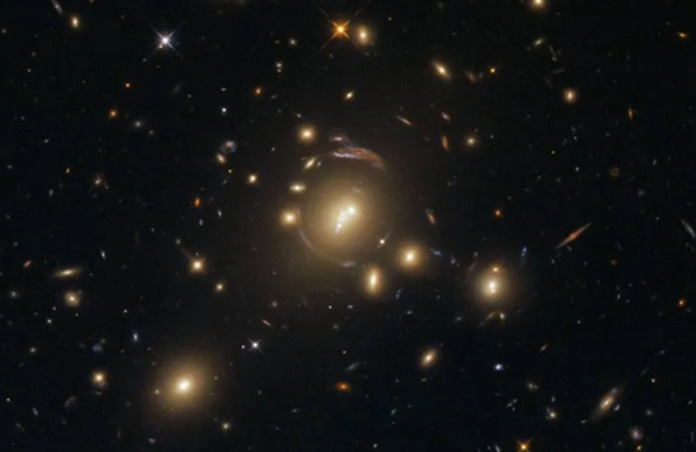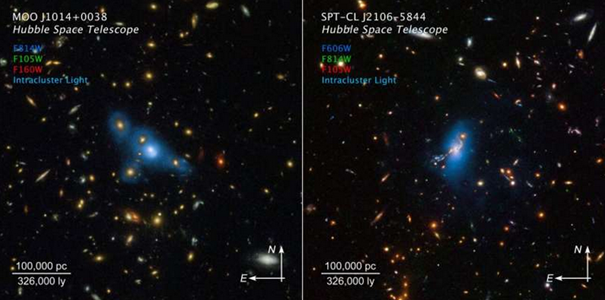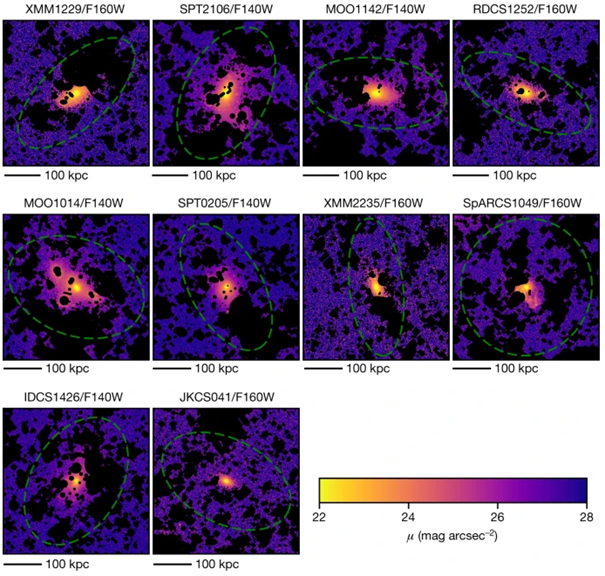Revision of the Origin of the ‘Ghost’ Light Permeating Galactic Clusters

The majority of galaxies exist within colossal structures, known of as clusters, wherein typically thousands of galaxies and intergalactic material are gravitationally bound. The brightest cluster galaxy (BCG) tends to be located towards the gravitational centre of the cluster. Concentrated near the BCG, but generally scattered throughout the intergalactic medium, we often find rogue stars that are not gravitationally bound to any particular galaxy within the cluster. These contribute to what is known as intercluster light (ICL) and have been a lingering anomaly in cosmology as a conclusive explanation as to their origin is yet to be found.

The leading solution for this unusual phenomenon, first proposed in 2011 by Craig Rudick et al, and more prominently adopted around 2014, had been that these stars were born within nurseries in the home galaxy, but were eventually stripped from them by dynamical mechanisms, or by the complete dissolution of their hosts. However, a more recent study, just published on the 4th of January 2023, by the duo of Hyungjin Joo and M. James Jee from Yonsei University found evidence that this is can not be the primary mechanism by which these stars arise.
Since the previous assumptions were built upon the idea that these dynamics arise over time, we should be able to observe a reduction in ICL fraction as we probe clusters further in the past. The expectation here is that as galaxies eject stars, the ICL becomes more luminous, and galaxies become less luminous. More specifically, analysing clusters at redshifts in excess of z = 1, light from ~7.7 billion years ago, should yield ICL fractions of a few percent.
The study reports on the analysis undertaken of 10 clusters, located within the range of 0.98 < z < 1.803. The images were taken by the Hubble Space Telescope’s (HST) using one of its wide field infrared cameras. The duo sourced these from the Mikulski archive, and narrowed their sample to the below set.

This study finds are that the ICL fraction has remained constant over this time period, with a mean fraction of their sample to be 17%. While our current understanding of galactic dynamics is still unable to fully explain the origin of the rogue stars, it is clear now that they originate from the very early periods of the universe, around the time that galaxies themselves were forming, and have been drifting in between these galaxies for billions of years. However, this does not discount the fact that the ICL is likely still contributed to by the stripping of galactic stars.
The authors highlight the significance of this conclusion, as narrowing down the options invariably brings us closer to understanding the nature of the ICL. They explain that since these stars have been around since the formation of the galaxies, they could be used in the near future as tracers of dark matter, allowing astronomers to map the distribution of dark matter throughout clusters with prevalent ICL activity.
--
Journal Source: H. Joo and M. James Jee, Intracluster light is already abundant at redshift beyond unity, Nature Astronomy, Vol. 613, 2023
Cover Image: ESA/Hubble & NASA
